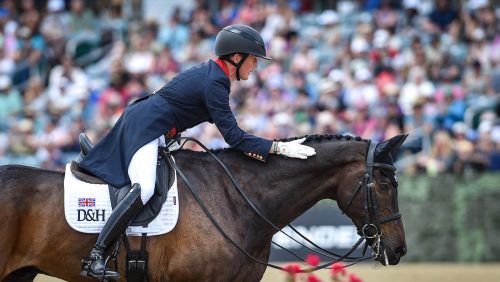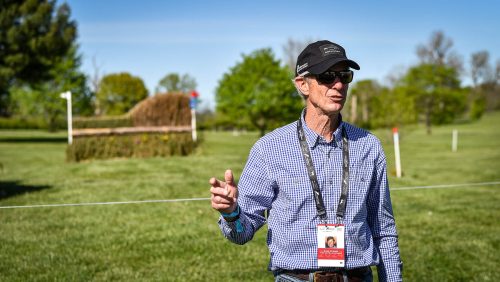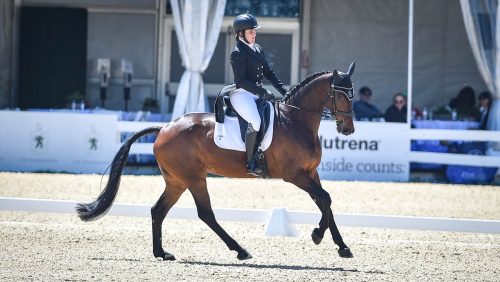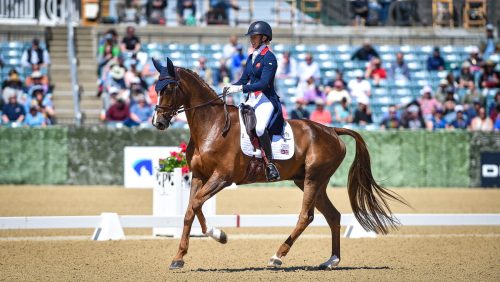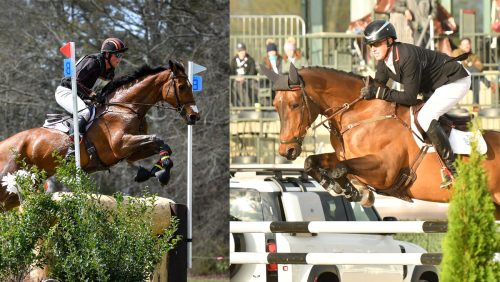The two-time Rolex Kentucky winner explains the challenges of riding the 2012 course.
I continue to be impressed by Derek di Grazia’s course design. These days I call him “the Bert de Nemethy” of cross-country course design. By that, I mean that his courses are slightly smaller, slightly narrower and appear slightly easier than what international riders expect.
Yet the end result of his design is that they are very difficult courses to jump clean. The 2012 cross-country course at the Rolex Kentucky Three-Day Event continues this trend in cross-country course design.
In years past, I have felt that course designers were building tricks rather than tests, and I’m glad to tell you that is not the case here. In order to gauge the overall difficulty of a course, I have a rule of thumb that I use: I take the total number of efforts and the total number of accuracy questions and produce a percentage.
For example, one of the courses here at Rolex about 10 years ago was a 62. This meant that two out of three efforts required some degree of accuracy. Using that same rule of thumb I would assign a 48 to this year’s course. For sake of comparison, Derek’s inaugural course here last year was a 47.
As you advance through this coursewalk, pause every so often to think about the accuracy questions that have been asked up to that point in the course.
ADVERTISEMENT
At 5ABC, there’s a slight bending line to the left, and at 5C, whatever refusals and runouts might happen will tend to be that the horse will refuse to the right. The reason is that when you bend a horse to the left, especially in the left lead, it is easier for the horse to pop his shoulder to the right. Of course, this increases the chance for runouts toward the red flag at both 5D and 8B.
As we continue the course, keep in the back of your mind that Derek has just examined the ability of the rider to maintain a balanced left curve and the honesty of this particular horse’s right shoulder.
Fence 9ABC is then a test of straightness, because a horse that is dishonest over his left shoulder can very easily cheat on you here.
Riders who I have watched walk this combination so far have been much too worried about the striding and not nearly concerned enough about the straightness. Your dressage instructor tells you to get straight by going forward. Derek is teaching the same lesson here.
At both 8AB and 9ABC, Derek has again provided option lines, and I think you will now start to see riders avail themselves of slightly easier alternatives.
Continuing on, experienced riders will jump 13, then turn their horses slightly left, thereby increasing the distance from their line of approach before they make their 90-degree righthanded turn towards 14AB, the double corners. This will allow the horse a precious few extra strides to read the situation and prepare himself mentally to deal with it.
ADVERTISEMENT
Note that the downhill slope followed by a sharp turn will test your dressage training, because the horse must come back quickly and easily in order to approach the first corner at a fast show jumping pace. Note also that Derek has caused the horses’ outside shoulder to begin to drift to the left, which is very undesirable when you consider that the horses and riders are about to jump two corners where the possibility of a refusal toward the white flag is obvious.
I mentioned earlier that Derek uses other aspects of design rather than just height and spread, and this combination is an excellent illustration of that. The spread at 13 and the drop behind it cause you to lose your balance, just before you need to be exquisitely balanced and precise.
The 90-degree turn to the right may cause the horse’s left shoulder to drift at exactly the wrong instance, causing a refusal to the left. Again, as at 9BC, Derek has used very tall brush just off to the side. Tall brush and trees or branches cause horses to instinctively move their bodies the opposite direction.
Derek knows this, and he is using the horse’s instincts to make a combination that is already difficult world-class. Keep a close eye on this series, because I predict some “coachable moments” here.
Derek has designed a course that is worthy of its four-star designation. Only the best riders in the world will make it look easy, and the rest of the unfortunates will show you just how difficult this 2012 Rolex cross-country course really is.






